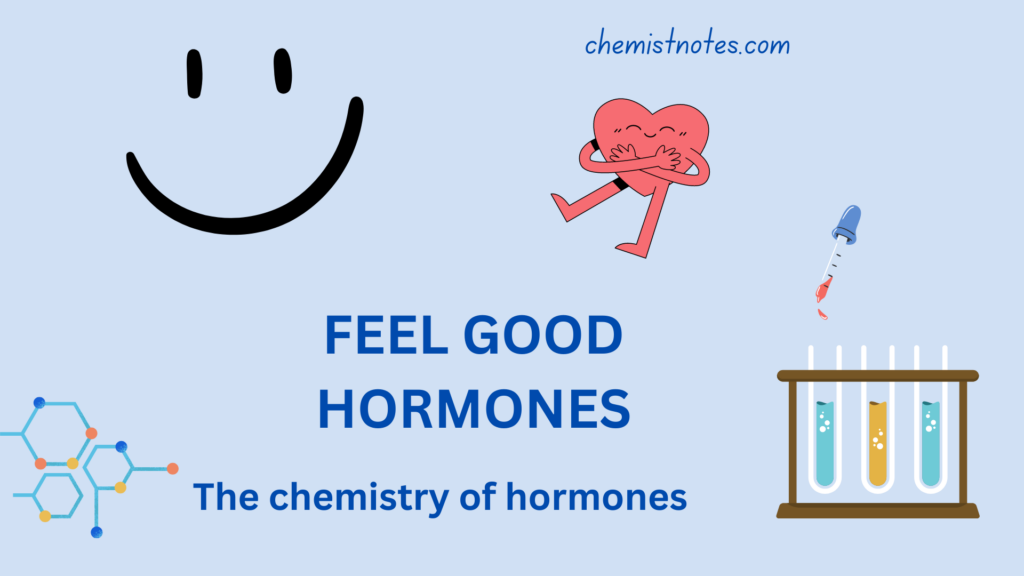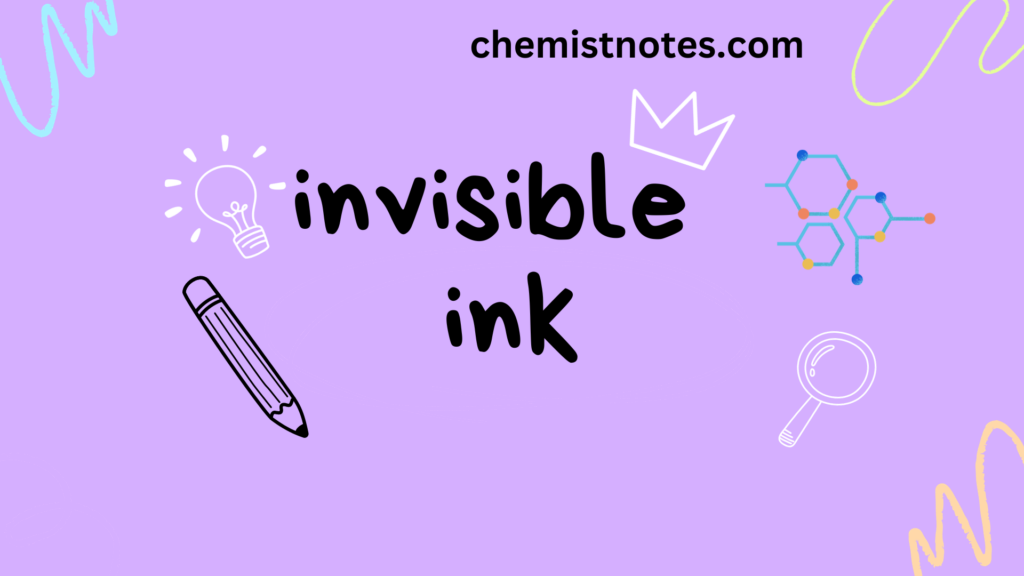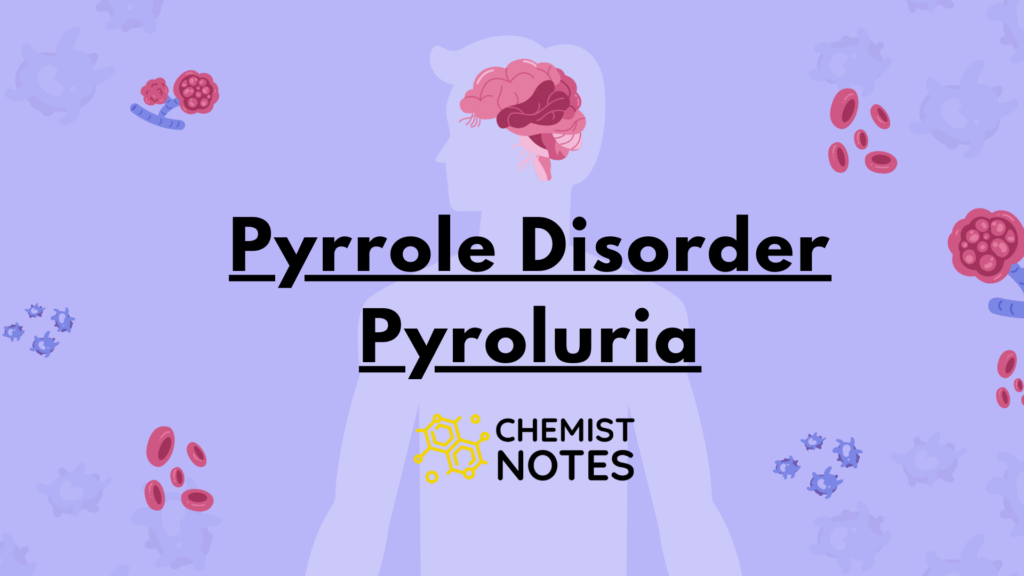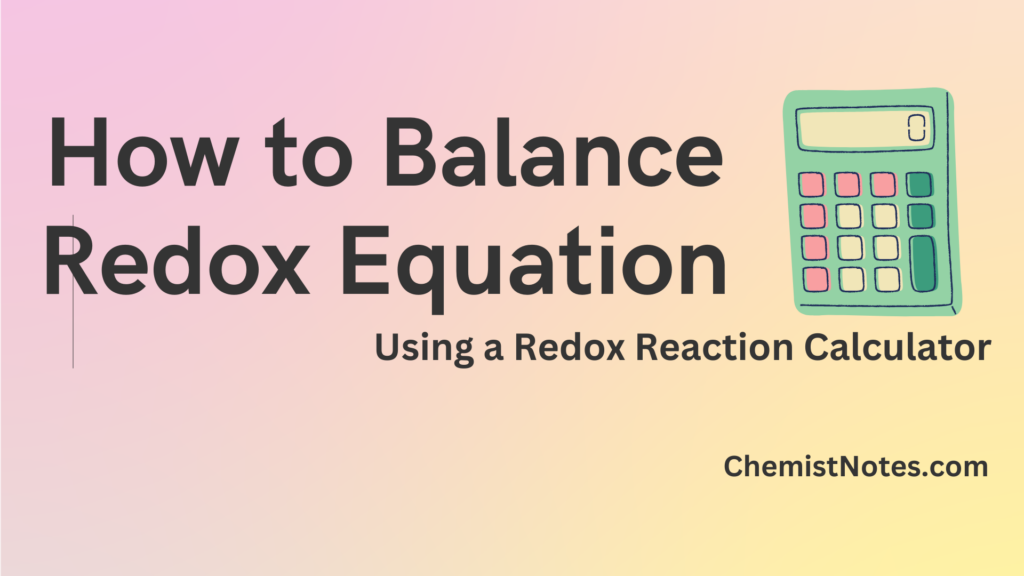The chemistry dictionary offers definitions and examples of important chemistry and chemical-related terms, which are listed in alphabetical order. For each term, a brief definition is given. Each link leads to a more comprehensive discussion of the word. Additional definitions are also available.
Chemistry Terms Starting with A to Z
| S.N. | Term | Meaning | Chapter |
|---|---|---|---|
| 1 | absolute alcohol | common name for high purity ethanol which contains only one percent water. | Alcohols, Phenols, and Ethers (Organic) |
| 2 | absolute configuration | a way of representing the absolute structure of an optical isomer, dextrorotatory or laevorotatary. | |
| 3 | absolute temperature | a scale of temperature based on absolute zero. | |
| 4 | absolute zero | zero of thermodynamic temperature (0 kelvin) and It is equivalent to –273.15°C or –459.67°F. | |
| 5 | absorption | the take up of a gas by a solid in its bulk structure or liquid, or the take up of a liquid by a solid. | |
| 6 | absorption coefficient | The molar absorption coefficient (symbol ε) is a quantity that characterizes the absorption of light when it passes through a sample of the absorbing material. | Spectroscopy |
| 7 | absorption tower | A long vertical column which is used for absorbing gases in industry. | |
| 8 | ABS plastic | A class of plastics based on acrylonitrile– butadiene–styrene copolymers. | |
| 9 | abstraction | A chemical reaction that involves bimolecular removal of an atom or ion from a molecule. | |
| 10 | accelerator | A substance which speed up the rate of a chemical reaction, i.e. a positive catalyst | |
| 11 | acceptor | A compound, molecule, ion, etc., to which electrons are donated during the formation of a coordinate bond. | |
| 12 | Acheson process | process for the manufacture of graphite by heating coke mixed with clay in the industrial. | |
| 13 | achiral | a molecule which is superimposible on its mirror image, not chiral | |
| 14 | acid | chemical species that contains hydrogen and dissociates in water to produce positive hydrogen ions. | |
| 15 | acidimetry | Volumetric analysis to determine the amount of base using standard solutions of acids | |
| 16 | acid rain | form of precipitation having a pH value of less than about 5.0, which has adverse effects on the fauna and flora on which it falls. | |
| 17 | acid salt | A salt of a polybasic acid in which not all the hydrogen atoms have been replaced by hydroxide ions | |
| 18 | acid value | the amount of free acid present in a fat, equal to the number of milligrams of potassium hydroxide needed to neutralize this acid. | |
| 19 | ACT | Activated-Complex Theory. | |
| 20 | actinic radiation | Electromagnetic radiation that is capable of initiating a chemical reaction. | |
| 21 | actinometer | a device used to measure the intensity of electromagnetic radiation. | |
| 22 | actinometry | The measurement of the intensity of electromagnetic radiation. | |
| 23 | action spectrum | A graphical plot of the efficiency of electromagnetic radiation in producing a photochemical reaction against the wavelength of the radiation used. | |
| 24 | activation analysis | An analytical technique that can be used to detect most elements when present in a sample in milligram quantities (or less). | |
| 25 | activation energy | The minimum energy required for a chemical reaction to take place. it is denoted by Ea . | |
| 26 | acyclic | a compound which does not have a ring in its molecules. | |
| 27 | acylation | The process of introducing an acyl group (RCO–) into a compound. | |
| 28 | acyl fission | The breaking of the carbon–oxygen bond in an acyl group. | |
| 29 | Adams catalyst | A dark brown powder, a hydrated form of platinum(IV) oxide (PtO2), is produced by heating chloroplatinic acid (H2PtCl6) with sodium nitrate (NaNO3). It is used in hydrogenations of alkenes to alkanes, nitro compounds to amines, and ketones to alcohol. | |
| 30 | adduct | compounds formed by coordination between a Lewis acid (acceptor) and a Lewis base (donor). | |
| 31 | adenine | A purine derivative, major component bases of nucleotides and the nucleic acids DNA and RNA. | |
| 32 | adhesive | A substance is used for joining surfaces together. | |
| 33 | adiabatic process | Any process that occurs without exchange of heat or at constant heat | |
| 34 | adsorption | The formation of a layer of gas, liquid, or solid on the surface of a solid. | |
| 35 | adsorption indicator | A type of indicator which is used in precipitation titration | |
| 36 | aerogel | A low-density porous transparent material that consists of more than 90% air which are used as drying agents. | |
| 37 | aerosol | A colloidal dispersion of solid or liquid in a gas. | |
| 38 | AES | Atomic Emission Spectroscopy | |
| 39 | affinity chromatography | chromatographic technique for purifying natural polymers, especially proteins. | |
| 40 | agar | An extract of certain species of red seaweeds that is used as a gelling agent in microbiological culture media, foodstuffs, medicines, and cosmetic creams and jellies. | |
| 41 | albumin (albumen) | a group of globular proteins soluble in water but form insoluble coagulates when heated. | |
| 42 | aldol reaction | it is condensation reaction between aldehyde or ketone having alpha hydrogen and another aldehyde or ketone to give beta-hydroxy carbonyl compound. | |
| 43 | aliphatic compounds | Organic compounds that are alkanes, alkenes, or alkynes or their derivatives. | |
| 44 | alkali | A base that dissolves in water to give hydroxide ions. | |
| 45 | alkali metals | The elements of group 1 (formerly IA) of the periodic table: Li Na,K, Rb,Cs,Fr. | |
| 46 | alkalimetry | Volumetric analysis to determine the amount of acid using standard solutions of alkali. | |
| 47 | alkaline | a solution that has an excess of hydroxide ions (i.e. a pH greater than 7). | |
| 48 | alkanes (paraffins) | Saturated hydrocarbons with the general formula CnH2n+2. | |
| 49 | alkenes (olefenes, olefins) | Unsaturated hydrocarbons contain one or more double carbon-carbon bonds in their molecules. | |
| 50 | alkylation | reaction that introduces an *alkyl group into an organic molecule. | |
| 51 | alkyl group | A group that contains carbon and Hydrogen atom only | |
| 52 | alkynes (acetylenes) | Unsaturated hydrocarbons containing one or more triple carbon-carbon bonds in their molecules. | |
| 53 | allenes | >C=C=C< containing group in which three carbon atoms are linked by two adjacent double bonds. in a compound. | |
| 54 | allotropy | The existence of elements in two or more different forms (allotropes).like diamond, graphite, fullerenes are the allotropes of carbon | |
| 55 | alloy | A material consisting of two or more metals (e.g. brass is an alloy of copper and zinc) or a metal and a nonmetal (e.g. steel is an alloy of iron and carbon, sometimes with other metals included). | |
| 56 | alpha-naphthol test | A biochemical test to detect the presence of carbohydrates in solution, also known as *Molisch’s test* (after the Austrian chemist H. Molisch) | |
| 57 | alpha particle | A helium nucleus that is emitted by a larger nucleus during the course of the type of radioactive decay known as alpha decay | |
| 58 | alums | A group of double salts with the formula A2SO4.B2(SO4)3.24H2O, where A is a monovalent metal and a trivalent metal. E.g. K2SO4⋅Al2(SO4)3⋅24H2O is potash alum | |
| 59 | amalgam | An alloy of mercury with another metals | |
| 60 | amatol | Ammonium nitrate and trinitrotoluene combine to form a highly explosive chemical. | |
| 61 | amino acid racemization (AAR) | The process of conversion of optically active amino acids into optically inactive active amino acids | |
| 62 | ammonia clock | A form of the atomic clock in which the frequency of a quartz oscillator is controlled by the vibrations of excited ammonia molecules. | |
| 63 | ammonium ion | The monovalent cation NH4+. It may be regarded as the product of the reaction of ammonia (a Lewis base) with a hydrogen ion. | |
| 64 | amorphous | Describing a solid in which atoms are not well arranged, and do not posseses crystallinity; i.e. one that has no long-range order in its lattice. | |
| 65 | amount of substance | A measure of the number of entities present in a substance.or number of particles that constitute the substance Symbol ‘n’. | |
| 66 | ampere | The SI unit of electric current. It's symbol is A. | |
| 67 | amperometric titration | A method of determining the chemical composition of a solution by measuring the current flowing through a solution-containing cell. | |
| 68 | amphiphilic | Determining a molecule that contains both hydrophilic and hydrophobic components, such as detergents. | |
| 69 | ampholyte | In the presence of a strong base, a substance that can act as either an acid or a base. | |
| 70 | amphoteric | A compound that can act both as an acid and a base . E.g. Water, amino acids, protein | |
| 71 | a.m.u. | atomic mass unit. A unit of mass used to express relative atomic masses. It is equal to 1/12 of the mass of an atom of the isotope carbon–12 and is equal to 1.660 33 × 10–27 kg | |
| 72 | Analar reagent | A high-purity chemical reagent with known impurities for use in chemical analyses. | |
| 73 | Andrews titration | A titration that is used to estimate amounts of reducing agents. | |
| 74 | angle-resolved photoelectron spectroscopy (ARPES) | A technique for studying the composition and structure of surfaces by measuring both the kinetic energy and angular distribution of photo-electron ejected from a surface by electromagnetic radiation. | |
| 75 | anhydride | A compound that is formed by the elimination of water in a molecule. For instance, sulphur trioxide is the (acid) anhydride of sulphuric acid. SO3 + H2O → H2SO4. | |
| 76 | anhydrous | chemical compound that exists in salt form, lacking water: or the water of crystallizations. | |
| 77 | anion | A negatively charged ion, or an ion attracted to the anode during electrolysis. | |
| 78 | anisotropic | The medium/substance in which certain physical properties are different in different directions. | |
| 79 | annealing | A type of heat treatment used to soften a metal, relieve internal stresses and instabilities, and make it easier to work with or machine. | |
| 80 | annulation | A chemical reaction in which two new bonds are formed to fuse a ring to a molecule. | |
| 81 | anode | A positive electrode. | |
| 82 | antifoaming agent | A chemical that prevents foam from forming in processes like electroplating and papermaking, as well as in boiler water. | |
| 83 | aqua regia | A mixture consist of concentrated nitric acid and concentrated hydrochloric acid in the ratio 1:3 respectively. | |
| 84 | aquo ion | A hydrated positive ion present in solution. | |
| 85 | arene complex | A complex in which an aromatic ring is linked to a metal atom through its pi-electrons. | |
| 86 | arenes | Aromatic hydrocarbons, such as benzene, toluene, and naphthalene. | |
| 87 | Arndt–Eisert synthesis | A process of converting a carboxylic acid into the next higher homologue acid (or one of its derivatives). | |
| 88 | aromatic compound | An organic compound that contains a benzene ring in its molecules or that has chemical properties similar to benzene. | |
| 89 | aromaticity | The peculiar characteristic of aromatic compounds. | |
| 90 | ARPES | angle-resolved photoelectron spectroscopy. | |
| 91 | aryne | A chemical that is created by removing two neighboring hydrogen atoms from an arene to change a double bond into a triple bond. | |
| 92 | asbestos | Amosite, crocidolite (blue asbestos), tremolite, anthophyllite, and actinolite are fibrous amphibole minerals, while chrysotile is a fibrous serpentine mineral | |
| 93 | astrochemistry | The study of chemical species in interstellar space. Interstellar molecules are usually detected by their spectra in the radio, microwave, or infrared regions of the electromagnetic spectrum. | |
| 94 | asymmetric induction | The phenomenon of preferential formation of one particular enantiomer or diastereoisomer in a reaction due to chiral element in one of the reactants or in the catalyst used. | |
| 95 | atmolysis | The process of separating a mixture of gases based on their different diffusion rates. | |
| 96 | atom | The smallest entity of an element that can exist chemically | |
| 97 | atomic absorption spectroscopy (AAS) | The nonexcited atoms in a vaporized sample absorb electromagnetic radiation at specific wavelengths, which is used to analyze the sample. | |
| 98 | atomic clock | A device that uses periodic events within atoms or molecules to standardize time. | |
| 99 | atomic emission spectroscopy (AES) | A method of analysis in which a sample is vaporized and the atoms present are detected through the emission of electromagnetic radiation at specific wavelengths. | |
| 100 | atomic force microscope (AFM) | A type of microscope in which a small probe, consisting of a tiny diamond chip, is maintained in contact with the sample surface by a springloaded cantilever. | |
| 101 | atomicity | number of atoms in a given molecule. For example, oxygen (O2) has an atomicity of 2, | |
| 102 | atomic number | number of protons in the nucleus of an atom. It is denoted by symbol Z. | |
| 103 | atom-probe field-ion microscopy | A technique for identifying individual atoms on surfaces. In the atom-probe field-ionization microscope (FIM) there is a hole in the fluorescent screen, with which the FIM image of an adsorbed atom is brought into coincidence. | |
| 104 | atropisomers | Conformers that have highly restricted rotation about a single bond therefore can be separated as distinct species. | |
| 105 | attenuated total reflectance spectroscopy (ATRS) | A variation of infrared spectroscopy in which the IR source is reflected from the sample and absorption occurs only in the surface layer. | |
| 106 | Aufbau principle | A principle that gives the order in which orbitals are filled in successive elements in the periodic table. | |
| 107 | Auger effect | ejection of an electron from an atom due to the de-excitation of an excited electron within the atom. | |
| 108 | autocatalysis | Catalysis in which one of the products of the reaction acts as catalyst for that reaction. | |
| 109 | autoprotolysis | A transfer of a hydrogen ion (H+) between molecules of an amphiprotic solvent, one molecule acting as a Brønsted acid and the other as a Brønsted base. | |
| 110 | Avogadro constant | The number of atoms or molecules in one mole of substance. It has the value 6.022 1367(36) × 1023. it was called as Avogadro’s number NA. | |
| 111 | Avogadro’s law | Equal volumes of all gases contain equal numbers of molecules at the same pressure and temperature. The law, often called Avogadro’s hypothesis, is true only for ideal gases. | |
| 112 | AX spectrum | A general pattern of the nuclear magnetic resonance spectrum of a molecule AX, where A and X are both spin-½ nuclei. | |
| 113 | azeotrope | A mixture of two liquids that boils at constant composition. | |
| 114 | azeotropic distillation | A technique for separating components of an azeotrope by adding a third liquid to form a new azeotrope with one of the original components | |
| 115 | azo compounds | Organic compounds containing the group –N=N– group. | |
| 116 | back titration | A technique in volumetric analysis in which a known excess amount of a reagent is added to the solution to be estimated | |
| 117 | Baeyer strain | angle strain | |
| 118 | Baeyer test | test for unsaturated compounds in which potassium permanganate is used. | |
| 119 | Baeyer–Villiger reaction | A rearrangement reaction used in organic synthesis in which a ketone reacts with a peroxy acid to form an ester. | |
| 120 | banana bond | electron-deficient three centre bond holding the B–H–B bridges in boranes and similar compounds. | |
| 121 | Barbier–Wieland degradation | stepwise degradation of a carboxylic acid to the next lower homologue | |
| 122 | base | A compound that reacts with a protonic acid to give water (and a salt). | |
| 123 | base metal | A common inexpensive metal, such as iron or lead, that corrodes, oxidizes, or tarnishes on exposure to air, moisture, or heat. | |
| 124 | bathochromic shift | A shift of a spectral band to longer wavelengths as a result of substitution in a molecule or a change in the conditions. | |
| 125 | Beattie–Bridgman equation | An equation of state that relates the pressure, volume, and temperature of a gas and the gas constant. | |
| 126 | Beckmann rearrangement | The chemical reaction in which a ketone oxime is converted to an amide,using sulphuric acid as a catalyst. | |
| 127 | Beilstein’s test | a chemical test which is used to detect halogens such as chlorine,bromine, iodine present in organic compound. | |
| 128 | B–Z reaction | Belousov–Zhabotinskii reaction | |
| 129 | Benedict’s test | A biochemical test to detect reducing sugars in solution | |
| 130 | benzilic acid rearrangement | An organic rearrangement reaction in which benzil (1,2-diphenylethan-1,2- dione) is treated with hydroxide and then acid to give benzilic acid (2-hydroxy-2,2-diphenylethanoic acid) | |
| 131 | benzoylation | A chemical reaction in which a benzoyl group ( C6H5CO) is introduced into a molecule. | |
| 132 | Berry mechanism | A mechanism by which ligands in trigonal bipyramidal complexes can interchange between axial and equatorial positions. | |
| 133 | Berthollide compound | A solid compound with slight variations in chemical composition | |
| 134 | Bessemer process | A process used to convert pig iron from a blast furnace into steel. | |
| 135 | beta decay | radioactive decay in which an unstable atomic nucleus changes into a nucleus of the same mass number but different proton number | |
| 136 | BET isotherm | An isotherm that takes account of the possibility of multilayer adsorption on the solid surface. | |
| 137 | bifurcation | A phenomenon in dynamical systems in which the number of solutions for a type of behaviour suddenly changes when one of the parameters deÜning the system reaches a critical value. | |
| 138 | Birge–Sponer extrapolation | A method used to calculate the heat of bioreactor dissociation of a molecule by extrapolation from observed band spectra. | |
| 139 | Birkeland–Eyde process | A process for the fixation of nitrogen by passing air through an electric arc to produce nitrogen oxide. | |
| 140 | biuret test | A test to detect proteins in solution, | |
| 141 | bleaching powder | A white solid which is a mixture of calcium chlorate(I), calcium chloride, and calcium hydroxide. | |
| 142 | boiling point (b.p.) | The temperature at which the saturated vapour pressure of a liquid equals the external atmospheric pressure. | |
| 143 | bond dissociation energy | An amount of energy associated with a bond in a chemical compound. | |
| 144 | bond order | A value indicating the degree of bonding between two atoms in a molecule relative to a single bond. | |
| 145 | borax-bead test | A simple laboratory test for certain metal ions in salts. | |
| 146 | Born–Haber cycle | A cycle of reactions used for calculating the lattice energies of ionic crystalline solids. | |
| 147 | Boyle’s law | The volume (V) of a given mass of gas at a constant temperature is inversely proportional to its pressure (p), i.e. pV = constant. | |
| 148 | brown-ring test | A test for nitrates ions. | |
| 149 | buckminsterfullerene | allotrope of carbon composed of clusters of 60 carbon atoms bonded together in a polyhedral structure composed of pentagons and hexagons | |
| 150 | buffer | A solution that resists change in pH when small amounts of an acid or alkali are added over a certain range. | |
| 151 | burette | A graduated glass tube with a tap at one end leading to a fine outlet tube, used for delivering known volumes of a liquid (e.g. in titration). | |
| 152 | by-product | A side product formed during a chemical reaction at the same time as the main product. | |
| 153 | B–Z reaction (Belousov–Zhabotinskii reaction) | A chemical reaction that shows a periodic colour change between magenta and blue with a period of about one minute. | |
| 154 | cage effect | An effect occurring in certain condensed-phase reactions in which fragments are formed and their diffusion is hindered by a surrounding ‘cage’ of molecules. | |
| 155 | Cannizzaro reaction | A reaction of aldehydes without alpha hydrogens give carboxylic acids and alcohols in presence of strong base. | |
| 156 | carboranes | Compounds similar to the *boranes, in which one or more borons are replaced by carbon atoms. | |
| 157 | carbylamine reaction | isocyanide test. | |
| 158 | carbyne | A reaction intermediate of the type R–C≡, with three nonbonding electrons on the carbon atom | |
| 159 | carcinogen | Any agent that produces cancer, e.g. tobacco smoke,certain industrial chemicals, and ionizing radiation. | |
| 160 | Carius method | A method of determining the amount of sulphur and halogens in an organic compound | |
| 161 | Carnot cycle | The most efficient cycle of operations for a reversible heat engine. | |
| 162 | carrier gas | The gas that carries the sample in gas chromatography. | |
| 163 | carrier molecule | A molecule that plays a role in transporting electrons through the electron transport chain | |
| 164 | cascade liquefier | An apparatus for liquefying a gas of low critical temperature. | |
| 165 | cascade process | Any process that takes place in a number of steps. | |
| 166 | cast iron | A group of iron alloys containing 1.8 to 4.5% of carbon. | |
| 167 | catalysis | The process of changing the rate of a chemical reaction by use of a catalyst. | |
| 168 | catalyst | A substance that increases the rate of a chemical reaction without itself undergoing any permanent chemical change | |
| 169 | catenane | A type of compound consisting of two or more large rings that are interlocked like the links of a chain | |
| 170 | catenation | The formation of chains of atoms in chemical compounds. | |
| 171 | cathode | A negative electrode. | |
| 172 | cation | A positively charged ion | |
| 173 | CD spectrum (circular dichroism spectrum) | The spectrum obtained by plotting the variable IR – IL against frequency of the incident electromagnetic radiation, where IR and IL are the absorption intensities for right- and left-circularly polarized light, respectively. | |
| 174 | chain reaction | A reaction in which the products of one step initiating a subsequent step. | |
| 175 | change of phase (change of state) | A change of matter in one physical *phase (solid, liquid, or gas) into another. | |
| 176 | Charles’ law | The volume of a fixed mass of gas at constant pressure expands by a constant fraction of its volume at 0°C for each Celsius degree or kelvin its temperature is raised. | |
| 177 | chelate | An inorganic complex in which a *ligand is coordinated to a metal ion at two (or more) points, so that there is a ring of atoms including the metal. The process is known as chelation. | |
| 178 | cheletropic reaction | A type of addition reaction in which a conjugated molecule forms two single bonds from terminal atoms of the conjugated system to a single atom on another molecule to give a cyclic adduct. Cheletropic reactions are types of *pericyclic reaction. | |
| 179 | chemical bond | A strong force of attraction holding atoms together in a molecule or crystals. | |
| 180 | chemical dating | An absolute *dating technique that depends on measuring the chemical composition of a specimen. | |
| 181 | chemical fossil | Any of various organic compounds found in ancient geological strata that appear to be biological in origin and are assumed to indicate that life existed when the rocks were formed. |









